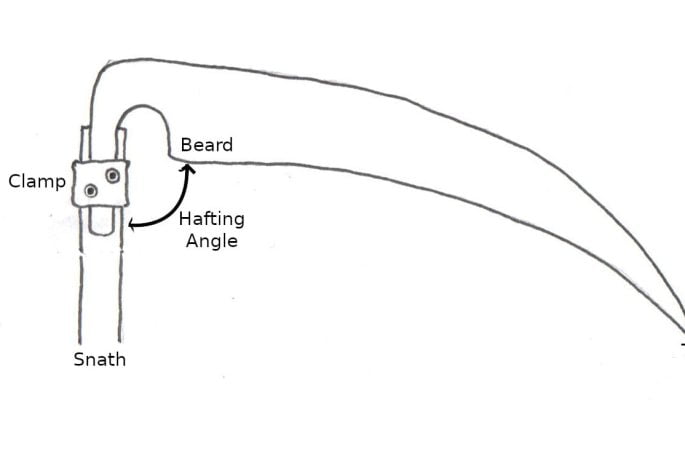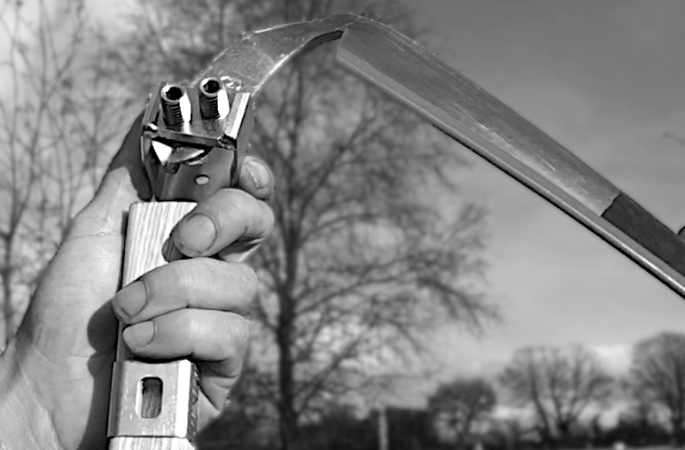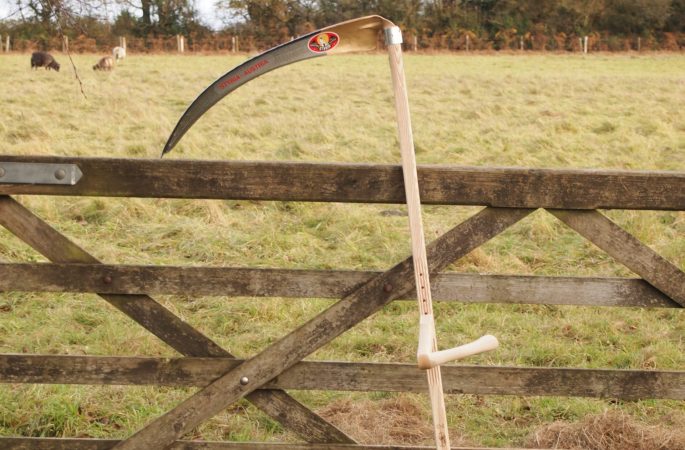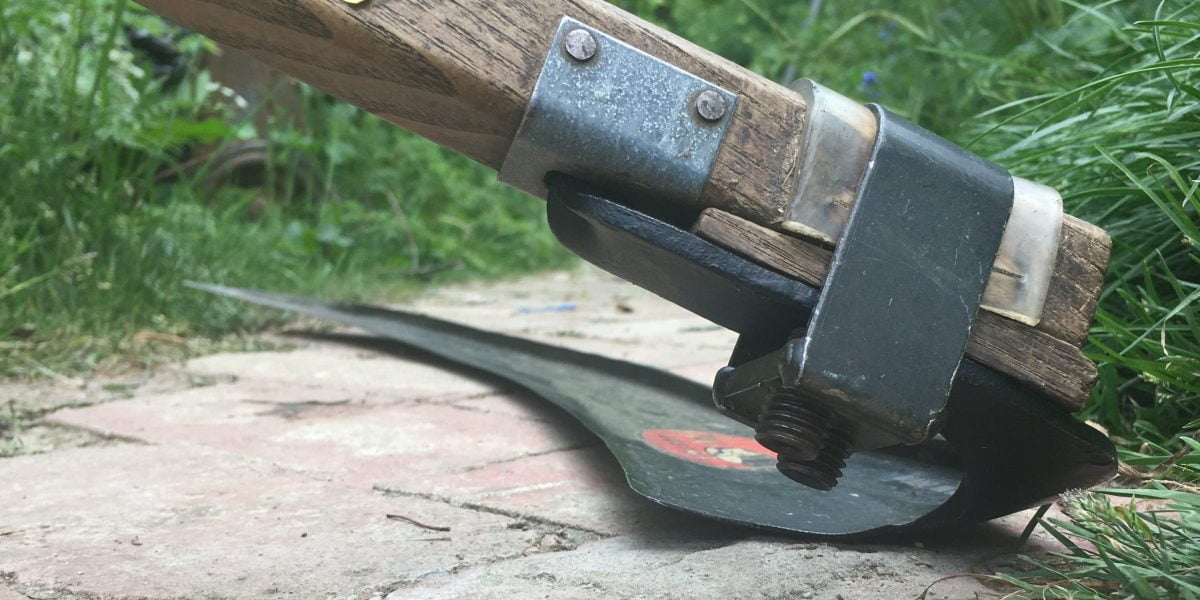
To mow well, the scythe blade needs to be set correctly.
There are three words used to describe the relationship of a scythe blade to the snath and to the ground – the hafting angle, the lay and the neigung angle. The first two of these can easily be adjusted by the scyther to influence how the blade mows.
- The lay describes how far the edge of the blade is from the ground.
- The hafting angle describes the angle the blade makes to the snath, when viewed from above.
- The neigung or tilt of the blade describes the lift of the point of the blade in relation to the body of the blade.
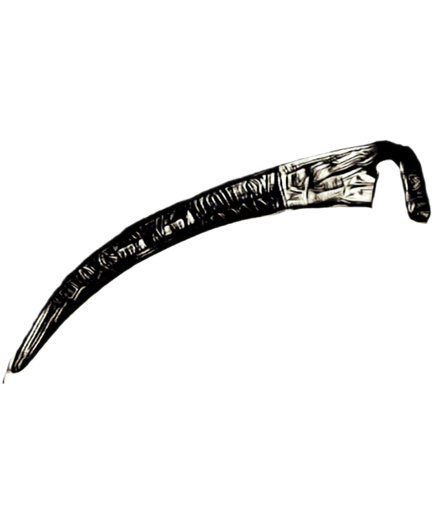
The Lay
The lay describes how far the edge of the blade is from the ground.
Ideal set up
When a scythe is correctly set up, the back of the blade is on the ground and the cutting edge is about ¼ inch above the ground.

A good lay. The edge is at a height suited to most mowing conditions.
The lay is influenced by the curved shape of the blade from rib to edge and the relationship between the angle of the blade tang and the snath.
If you blade is well matched to your snath, the lay should only need minor adjustment to suit your mowing style.
Lay too low
The edge of blade too close to the ground

Lay too high
The edge is too far from the ground.

When mowing, the back of the blade is kept on the ground at all times. The lay of the blade lifts up the edge into a good mowing position.
If the lay is too low the edge runs very close to the ground.
The blade mows very short and blunts quickly on grass roots, small stones etc.
It can be temporarily useful to cut awkward grass stems that are laying down too much to be caught by a standard lay
If the lay is too high the edge slides over short grass and does not cut effectively.
It can be temporarily useful to cut through tough stalks and tussocks.
Hold the scythe in a relaxed position as if you were about to mow.
When the back of the blade is on the ground the cutting edge should be about ¼ inch above the ground. This is just about enough to slip the end an Allan key under the edge.
The lay can be temporarily altered by lifting or lowering the hands.
Holding your hands up higher as you mow brings the blade edge away from the ground, lowering them brings it towards the ground. It’s hard to explain in words, get your scythe in your hands and have a go!
This allows you to temporarily adjust the lay of the blade to suit conditions whilst mowing.
Using a wedge.
If you consistently find that your blade blunts quickly or you have to lift your hands to get your blade to mow well, your lay may be too low.
You can lift the lay using a wedge between the tang of the blade and the snath as in the diagram below.
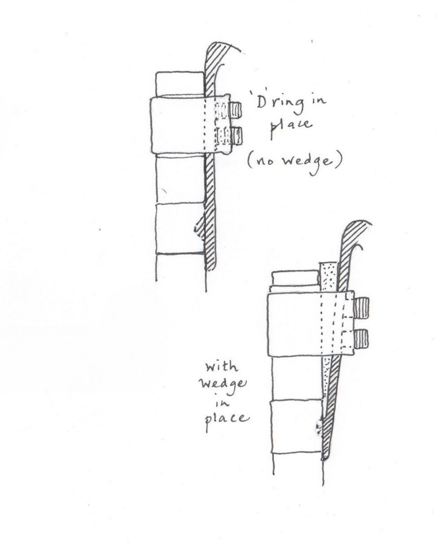
Altering the tang
It is possible to adjust the lay by changing the angle of the tang itself. This involves heating the tang (to cherry red) and moving it, whilst being careful not to alter the temper of the metal or affect other angles such as the neigung. It is generally beyond the scope of most scythers.
Fine tuning your mowing
The lay of the blade is also influenced by the relationship of the mower to the snath.
Altering your posture, the positioning of the grips on your snath or your mowing style will also alter the lay. You may find you need a wedge for some mowing styles or some blades and not for others.
More Information
